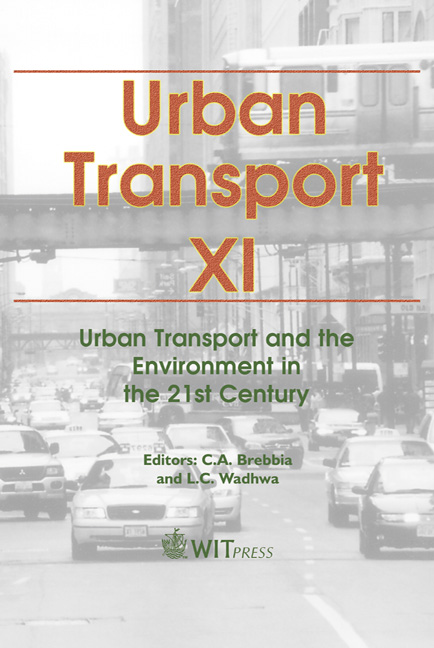Lane Changing And Merging Under Congested Conditions In Traffic Simulation Models
Price
Free (open access)
Transaction
Volume
77
Pages
10
Published
2005
Size
499 kb
Paper DOI
10.2495/UT050751
Copyright
WIT Press
Author(s)
P. Hidas
Abstract
This paper reports the findings of a study aimed at testing and evaluating the lane changing and merging abilities, especially under congested flow conditions, of four traffic simulators: AIMSUN, ARTEMiS, PARAMICS and VISSIM. Several hypothetical traffic scenarios that require a large proportion of vehicles to merge and/or change lanes are constructed. These scenarios are then implemented in each model and simulated under increasing traffic flow rates. The model outputs are compared and evaluated and conclusions are drawn on the quality of the simulators in terms of their ability to model lane changing and merging in congested conditions. This paper describes the test scenarios, briefly introduces the parameters related to lane changing available in each simulator, presents the results of the simulation runs, summarises the findings and formulates recommendations for further research and model development. Keywords: traffic microsimulation, lane changing, merging, traffic modelling. 1 Introduction Microscopic traffic simulation models are becoming increasingly important tools in modelling complex transport networks and evaluating various traffic management alternatives that cannot be studied by other analytical methods. Several traffic simulation tools are used in many countries, including AIMSUN, PARAMICS and VISSIM. While these packages are regarded as the state-of-theart, several problems were also identified in practice. A topic of increasing concern is the validity of the microscopic sub-models, such as the car following and lane changing models. In a recent literature review and user opinion survey [1] several reports were found on lane changing and merging problems in congested flow conditions.
Keywords
traffic microsimulation, lane changing, merging, traffic modelling.





